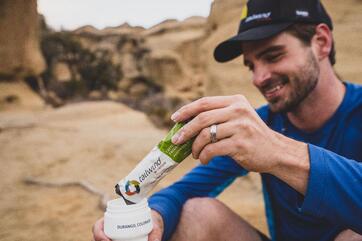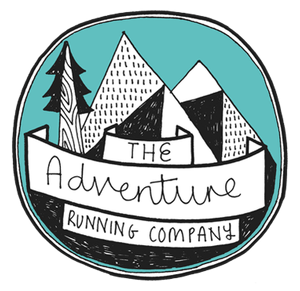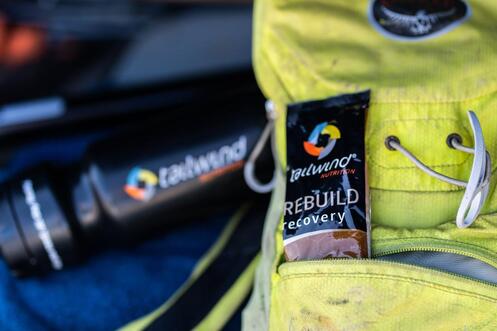 We do our fair share of training and racing here at The Adventure Running Company, as well as going for lovely long days out in the mountains, just for fun. A staple in our pack during and after a run is Tailwind. All carbohydrates, from kale to caramel, are converted into simple sugars before they’re used by your muscles. If that process happens quickly, they’re good exercise fuels. If it happens slowly, they’re healthy dinner foods. Carbohydrates can be one or the other, but it’s difficult for them to be both. When you’re exercising, your muscles can take in energy easily, making simple sugars (dextrose & sucrose) the best fuel choice because they act quickly. They don’t ask your digestive system to do a lot of work when your body is under stress, and therefore they don’t bother your gut or make your stomach hurt. Tailwind’s glucose/sucrose fuel takes advantage of how our bodies absorb nutrients. The combination of Tailwind’s fuel, electrolytes, and water has a synergistic effect, allowing the body to absorb more of each. Once in the bloodstream, the glucose in Tailwind fuels muscles directly, allowing athletes to go longer at higher intensities. Tailwind’s electrolyte profile mimics what you’re sweating out. Fueling at High Altitude: There is a common misconception that there is less oxygen at high altitude. This is not technically true. The same 21% percent of oxygen is in the air at the summit of Mt Blanc as at sea level; what is different is the barometric pressure (PB). The result is that for a given volume of air there are less total oxygen molecules present at high altitude. In addition, the reduced atmospheric pressure at altitude reduces the driving pressure for oxygen to enter the lungs, increases our heart and breathing rates to try and absorb more oxygen and deliver it to our muscles. Plus, hormonal changes occur, like the pumping of adrenaline to help with oxygen transportation and delivery. The only cure for these dramatic changes is time. We need time to let our body adjust, or acclimatise, and increase the number of oxygen-carrying red blood cells that improve our ability to deliver oxygen to the brain and working muscles. Most adaptations occur within two days to two weeks of exposure to altitude. Hydration: High altitude presents the perfect storm for dehydration. The air at high elevation is very dry, so sweat evaporates quickly and we experience increased evaporative losses from our lungs. High altitude also causes an increase in urination. As if that wasn’t bad enough, we lose the sensation of thirst at higher elevations since lower temperatures suppress thirst even when the body needs fluids. The obvious conclusion is that proper hydration is of the utmost importance while training or racing at high altitude. Athletes can lose as much as 12 litres of sweat in a 100-mile race! It is equally important, however, to get adequate electrolytes and glucose in our fuel to ensure the proper absorption of liquid. Tailwind does just that. It keeps you hydrated and provides the optimum ratio of sodium and glucose to keep our inner hydration pumps working at their peak. GI Distress: Your digestive tract gets compromised at altitude. Symptoms like nausea and vomiting are common signs of altitude sickness. At high elevations, the body is working on overdrive so it suppresses the digestive system in favour of increasing its cardiopulmonary reserves. In other words, the heart beats faster and non-essential bodily functions are repressed, resulting in a decline in food digestion efficiency. Tailwind’s use of glucose as its primary fuel source makes it easy to absorb since it doesn’t need digestion to get transported into our blood. Strategies at High Altitude: It is important to have a solid game plan for big days in the mountains. Here are some important strategies to keep in mind:
3 Keys to Recovery
For more information about Tailwind and their excellent products, visit www.tailwindnutrition.fr
0 Comments
Your comment will be posted after it is approved.
Leave a Reply. |
Authors
thoughts, feelings and tribulations about running by runners. |
RUN EXPLORE ADVENTURE
The Adventure Running Company Ltd. Registered in England & Wales, no. 10670502
© 2023 The Adventure Running Company All Rights Reserved. Site design by Nikki Barnard // Illustrations by Kate Sutton






